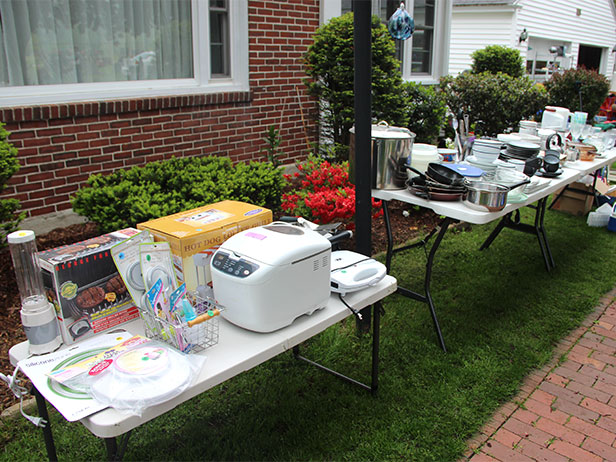
The community association of tomorrow is a vibrant, healthy organization of happy residents. They view their community association as their neighborhood - a place they call home. The benefits of living in a community association make it the best housing choice. In the new community association, there is forward thinking and progress. Living in the community is enjoyable and serving on the Board of Directors or on a committee is rewarding. Property values are escalating and community spirit blossoms.
In today's world, too often, community associations are viewed as bureaucratic organizations that fail to achieve desired results. They are perceived to be filled with leaders that are power mongers or have personal axes to grind. Financial decisions are made without input from the residents and property values are allowed to decline. Rules are interpreted and enforced without due process. Communication is only when necessary to take away the rights or dignity of a fellow resident. In reality, these stereotypes of the community association and its Board of Directors are only true when there is misdirected or stagnate leadership.
But how do we get from where we are (or where we are perceived to be) to the new association? First, let's dispel some of the preconceptions about the community association.
Myth #1: People that live in community associations don't want to participate. The fact is only a small percentage of residents don't want to participate. There are those that live in a community association solely to be anonymous. They do not have the time or the will to be a part of their surroundings. There are, however, a larger percentage of residents that want to participate but aren't encouraged to join. Worse, they are discouraged from joining. People have an undying need to belong. Rates of participation in any organization or group can be directly linked to the leadership's ability to promote involvement.
Myth #2: Community fees should remain the same every year. If you keep removing the bricks at the base of the wall, eventually it will fall. The cost for goods and services increases every year. Either you find better ways to accomplish the same tasks or you decrease the level of expected service. Trying to succeed at reducing costs without reducing service will only work for the short term. Eventually, the wall will come tumbling down.
Myth #3: Board members only act for the good of themselves, not the good of the community. In reality, most board members are in leadership positions because they want to make a difference and to be a part of their community. Very few board members act for self interest and continue to be elected in their community. The ability of the self-dealing board member in a community is only perpetuated by their lack of leadership in encouraging involvement and their failure in effective financial planning.
By starting from the beginning and understanding that the stereotypes of the past are no longer valid, we can work at creating a new community association. Here's how we start:

Steps in designing the new community association.
Planning Session
In the business world, this is often called a strategic planning session. The only difference here is that we are competing only within our own community and only need a strategy that will succeed internally. The planning session should be held over several meetings in comfortable settings. Attire should be casual and interruptions should be eliminated. No other business of the community should be considered.
Planning sessions are free-speaking forums for new ideas. Members of the board should be encouraged to express any inspiration. Often, it is helpful to have a professional administer the planning session to achieve more effective results. Changes do not occur overnight or with the swipe of a brush they need careful development and nurturing to achieve the desired results. The planning session needs to craft specific goals and objectives for the board and for the community. Emphasis should be on both short term and long term objectives.
Recognition of Community Problems
We do not live in a perfect world and the problems of a community association can be financial, social, historical or political. Make an actual list of the real or perceived problems in your community. Many of the problems will overlap. The key is to be honest in your assessment in order to truly identify the ails of your neighborhood. Consider tapping outside resources as a source of pinpointing community problems. Sometimes former residents or board members, Realtors, accountants and attorneys will have a clearer view of the problems in a particular community.
Initiate Community Solutions
Once you have a list of problems, you need to find answers. Sometimes the answer is obvious and self-evident. Other times, the solution seems impossible due to the inherent nature of the problem. Be creative. No possible solution is beyond reason. Believe that every problem has a positive aspect that can be exploited.
Communicate Plans
It is likely that one of the problems identified in your community was a lack of effective communication. Let this be the solution to that problem. Publish the newsletter. Make a concerted effort to obtain email addresses for every resident. Start a community web site. Use signage at the entrance as reminders. Strive to make sure that even the resident that never reads anything sent by the association is knowledgeable. Allow all forms of communication to offer avenues for feedback. Never assume the majority opinion ask for it.
Cultivate Leadership
Communities start down the path of discontent and failure when the leadership becomes misdirected or stagnate. There needs to be a continuous flow of new leaders in the community. This is not to say that there needs to be a complete turnover of the board or key leaders. Rather, there needs to be balanced transition from one group to the next. Committees need to be meaningful. Board and community meetings need to have purpose.
Encourage Participation
Every voice and every opinion needs to be heard. Enforcement of community policies is done with fairness, due process and respect. Individual differences are considered to be a plus to the diversity of the community. Participation and involvement are successful in different levels to different individuals. Encourage all levels of activity.
It is time for the community association to evolve. The original idea of neighborhood and common-interest exist now more than ever before. Yet, with passage of time, the evolutionary process needs to strive forward. Community leaders need to take an active role in planning, identifying and cultivating the new community association. This is not a once-a-year process. Rather, it is a change in the philosophy that will propel your community toward escalating property values and blossoming community spirit.
 Print
Print Email
Email







